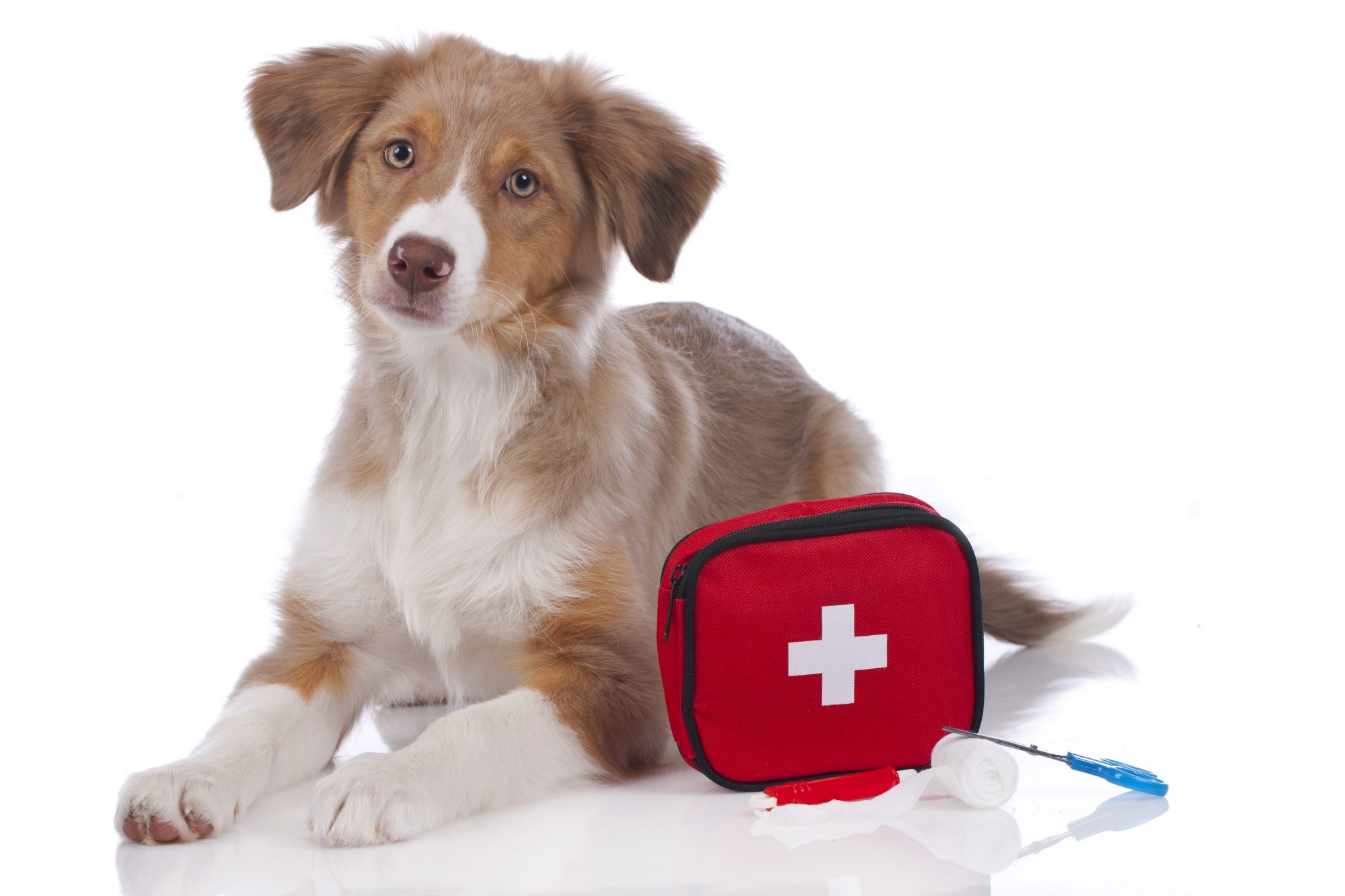How to Be Prepared for a Pet Emergency with Pet First Aid

Most of us don’t want to ever consider an emergency situation with our precious pets, but the fact is, most pets will have some kind of emergency in their lifetime. As a responsible pet owner, though, it is essential to recognize the signs of a veterinary emergency and discern whether it is something minor that can be treated at home or something that needs immediate medical attention. This knowledge is key in getting your pet the help they need quickly when necessary.
Since there are some questions and confusion around pet first aid, the team at The Bluffs Pet Clinic is here to help you always be prepared:
Back To The Basics
Before an emergency even occurs, you should be sure you have a pet first-aid kit. These are essential tools in treating many at home boo-boos and scrapes your pet may encounter that are minor in nature. Here are some suggested things you should have on hand in your pet first-aid kit:
- Bandages and gauze
- Elastic tape/wrap
- Ice pack
- Tweezer
- Antiseptic spray/antibiotic ointment for pets
- Bandage scissors
- Eye dropper or syringe
- Splints
- Styptic powder (for toenails)
- Small flashlight
- Tongue depressor
- Basket muzzle in your dog’s size
- Genteal Eye Ointment
- Nail Trimmer
Make sure you have the numbers to Animal Poison Control, your veterinary hospital, and any surrounding 24-hour emergency clinics.
Pet First Aid
It is important to take a detailed Pet First Aid and CPR course to help you prepare for potential emergency scenarios. There are several free online courses available. The American Red Cross even provides a free app for pet owners to guide you through various pet injuries and accidents to stabilize your pet while you get them to the animal hospital.
A few common emergency responses include the following:
- Minor bleeding: Muzzle your pet to avoid getting bit. Apply a clean bandage or cloth to the wound with light pressure to stop the bleeding. Keep pressure on for 3 minutes and check to see if the cut has started to clot. If it has, apply an antiseptic spray or ointment and cover with a bandage. If the bleeding persists, you should call the veterinarian.
- Fracture or possible fracture: Muzzle your pet and place them on a flat surface on top of a large sheet or blanket. Have a friend or loved one help pick up your pet using the edges of the surface or sheet to make a gurney. Do not manipulate the fracture or jostle your pet too much as you transport them to the clinic.
- Seizure: Keep your pet as calm as possible. Move all objects, furniture, and other obstructions from your pet’s vicinity so they won’t harm themself. Do not restrain your pet during the seizure, but sit by them and speak in a soothing voice. Time the duration of the seizure to relay this information to your veterinarian. Keep your pet warm and relaxed and call your animal hospital for more information.
Pet CPR Basics
If your pet is unresponsive, time is of the utmost importance. CPR can help you keep your pet breathing until you can get professional help. Here are some guidelines for performing CPR on a pet:
- Check for a heartbeat. Generally, the chest will rise and fall, or listen closely to your pet’s chest to try to hear it.
- If you can’t find one, place the heel of one hand over your pet’s heart and the other hand over the one below. For larger breeds, follow this instruction except place the hands over the sternum.
- Press hard and fast, at 100-120 compressions per minute. Adjust the pressure to the size of your pet, but the thrust downward must be firm for each pet. Make sure the chest springs up again before compressing. Do this 30 times.
- Continue compressions while opening the airway and give your pet a few breaths.
- Check for breathing and a heartbeat every few minutes.
During this time, have someone on the phone with your emergency veterinary clinic for further instruction. For more detailed information or to take a class please visit the American Red Cross.
Although there are things you can do to help in an emergency, your veterinary team are the experts. Even if you think you’ve handled the emergency, give us a call to make sure you do not need to come into the clinic.
If you would like more information about pet first aid, please do not hesitate to call us.

